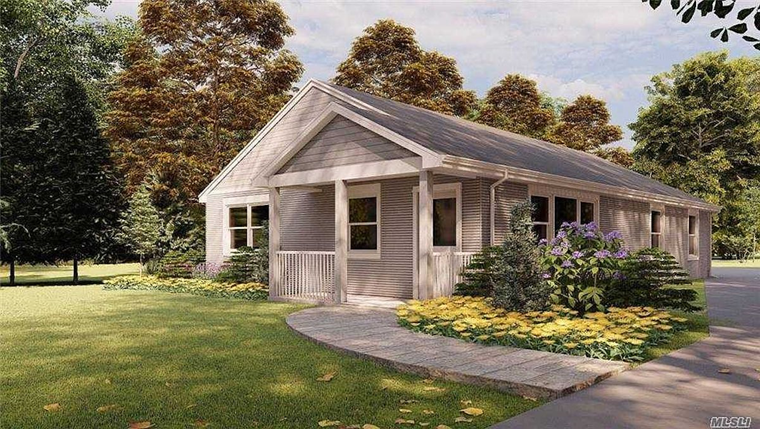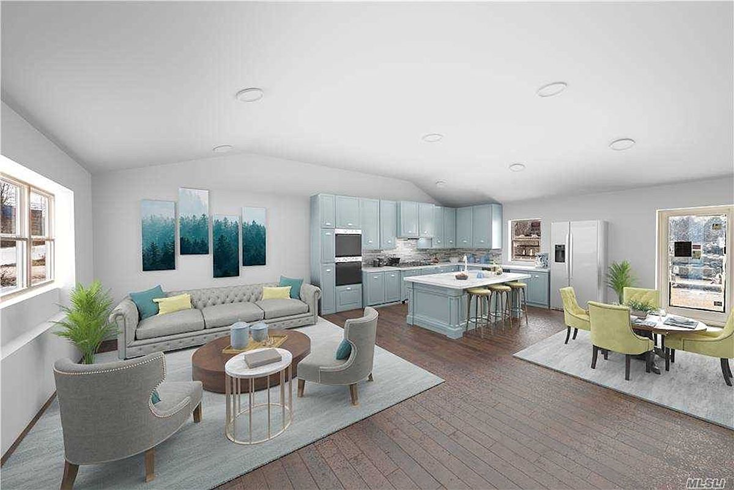
Charles Goulding Jr. considers a big advance when it comes to 3D printing for home construction.
First of Its Kind
In cities like New York, large numbers of urban dwellers moved to the suburbs during the pandemic, causing a rise in home prices. One new home in Riverhead, NY, however, costs half that of comparable residences. That home — 34 Millbrook Lane — became the first fully 3D printed house in the United States to hit the real estate market.
Priced at $299,999 and built by SQ4D, the 1400 sq. ft. home includes 3 bedrooms, 2 baths, and a 2.5 car detached garage.

A Long Time Coming
As some exasperated reporting has been working to made clear, the 3D printing construction industry has long been filled with considerable hype. For years, some accounts made fully printed homes — buildable within 24 hours! — seem imminent if not market-ready. To be considered fully 3D printed, critics cautioned, such homes must include installed, non-3D printed features like HVAC, plumbing, and electricity.
Other issues have been known to challenge the 3D construction industry generally. These include local permitting rules and the strength of the printed home’s concrete foundation.
That’s what makes the SQ4D home so remarkable. According to SQ4D and engineering firm H2M, the Riverhead home is an enhancement to traditional homes both in sustainability and in foundational sturdiness.
More to Come
At the risk of re-offending skeptics, the SQ4D house has launched another round of rabid optimism for the 3D printed construction industry. According to builder Kirk Andersen, “We’re trying to build homes and houses in half the time for half the price. Our profits will be higher, and we will be able to show that with more projects that we do.”
Some caution is certainly warranted, however. At present, SQ4D is a twelve-person shop in New York. If the company hopes to help revolutionize the real estate market, it will need to grow leaps and bounds. SQ4D aims to do just that, setting its sights on Florida and California to show that it can complete projects across the United States.
The Research & Development Tax Credit
Firms engaged in innovative product or process development can take advantage of a federal R&D tax credit to help subsidize their research efforts.
Enacted in 1981, the now permanent Federal Research and Development (R&D) Tax Credit allows a credit that typically ranges from 4%-7% of eligible spending for new and improved products and processes. Qualified research must meet the following four criteria:
- Must be technological in nature
- Must be a component of the taxpayer’s business
- Must represent R&D in the experimental sense and generally includes all such costs related to the development or improvement of a product or process
- Must eliminate uncertainty through a process of experimentation that considers one or more alternatives
Eligible costs include U.S. employee wages, cost of supplies consumed in the R&D process, cost of pre-production testing, U.S. contract research expenses, and certain costs associated with developing a patent.
On December 18, 2015, President Obama signed the PATH Act, making the R&D Tax Credit permanent. Beginning in 2016, the R&D credit can be used to offset Alternative Minimum Tax for companies with revenue below $50MM and for the first time, pre-profitable and pre-revenue startup businesses can obtain up to $250,000 per year in payroll tax cash rebates.
Conclusion
After years of speculation and hype, the future has perhaps finally arrived for market-ready 3D printed homes. The first such home, priced at half the cost of nearby houses, may one day open a world of possibility for prospective homeowners. The challenge, of course, will be scaling the home 3D printing process. In the meantime, however, 2021 marks an important step toward a new day in real estate.
